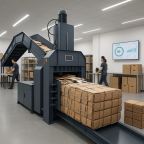
The three most important metals in the Italian metallurgical industry
Italy takes great, deep pride in its heritage of precision engineering. It shines brightest in the manufacturing of turned parts, like spacers, fasteners, and fittings.
Turned parts are crucial components in fabricating various products in many industries. They range from housing and automotive to sports and medical sectors.
A broad range of uses requires an equally extensive variety of metals. Read on for which ones the Italian metallurgical industry uses the most.
The growing industry of Italian metallurgy
Italy's involvement in metalworking dates back to the copper age. They crafted art and functional objects with copper, bronze, iron, silver and gold. Only in the late 19th to early 20th century did Italy start developing its steel industry.
Its manufacturing boom kicked off around 1950. By 1980, it accounted for 21.5% of the European Economic Community’s (EEC) and Western Europe’s steel production. The end of the 20th century saw the move toward precision manufacturing, with companies like A&B Torneria.
The number of businesses of this nature continues to grow. According to Statista, there will be about 71,260 in the fabricated metals industry by the end of 2024.
The three most used metals
There are many metals used in the Italian metal manufacturing industry. The most common include copper, aluminium and stainless steel.
Copper
Copper is one of the most common and important elements in modern society. It’s a soft, malleable, ductile, reddish metal that’s excellent at conducting heat and electricity.
Italian metallurgists commonly use copper to make pipes and fittings to convey fluids like gases, fuels and water. It’s also common in electrical wiring, heating elements, and engine coils.
Aluminium
Humans learnt about the compound alum in the 5th century BCE. However, only in 1825 did anyone properly refine it into a metal. Today, metallurgists easily extract aluminium from bauxite, an ore rich in the element.
Aluminium has a lower density when compared to other common metals, making it lightweight, soft and malleable. It’s silvery-white, and metallurgists use it for various mechanical parts manufacturing thanks to its corrosion resistance.
For example, aerospace companies use aluminium parts for aircraft. The metal is also common in vehicle frames and kitchenware.
Stainless steel
Stainless steel is the combination of nickel, chromium and other metals with steel. It’s a strong, silver-grey metalthat’s resistant to corrosion.
There are also four key groups of stainless steel: ferritic, austenitic, martensitic, and duplex.
For example, metallurgists use stainless steel variants for making fittings, screws, and bolts in the chemical, food and automotive industries. They even use it to make tools that are essential for every car owner, like wrenches and life hammers.
Italy, the home of precision metallurgy
The most common metals used in the Italian metallurgical industries are all around us. From plumbing fittings to vehicle electronics and aircraft parts.
Are you looking for precise turning companies that handle common metals? Look to Italy, the home of some of the finest manufacturers in the industry.











